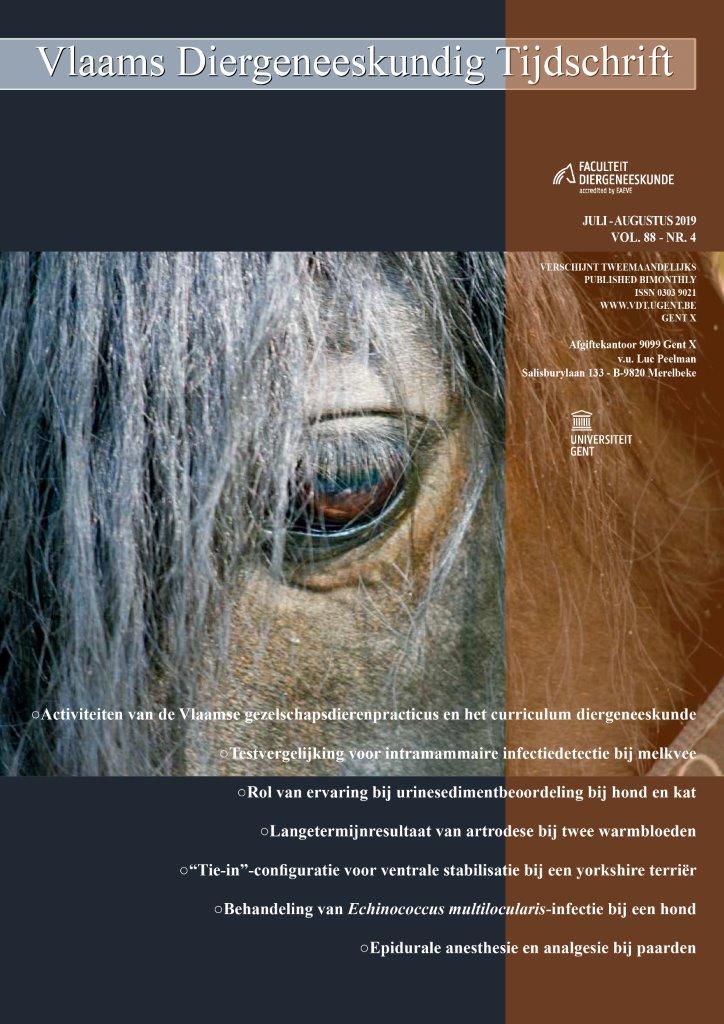Epidurale anesthesie en analgesie bij paarden
DOI:
https://doi.org/10.21825/vdt.v88i4.16013Samenvatting
Epidurale anesthesie is een loco-regionale anesthesietechniek waarbij medicatie geïnjecteerd wordt in de epidurale ruimte. Deze techniek werd in de humane geneeskunde ontwikkeld in de 19e eeuw en later ook toegepast in de diergeneeskunde. Enerzijds is epidurale anesthesie nuttig voor staande ingrepen, maar het kan ook gebruikt worden als onderdeel van een gebalanceerde anesthesietechniek of voor postoperatieve pijnbestrijding. Anesthesie en analgesie kunnen bereikt worden voor het bekken, de achterbenen, staart, vagina, vulva, anus of perineum en het abdomen. Hoewel de techniek bij verschillende indicaties gebruikt kan worden, zijn er echter ook enkele tegenindicaties en kunnen er complicaties optreden. Bij paarden kan een epidurale anesthesie craniaal (lumbosacraal) of caudaal (sacro-coccygeaal of Co1-Co2) uitgevoerd worden. Naast enkelvoudige injecties kan ook een epidurale katheter geplaatst worden voor herhaaldelijke toediening. Afhankelijk van het gewenst effect kan er een keuze gemaakt worden uit verschillende types medicatie (lokale anesthetica, alfa-2 agonisten, opioïden, ketamine, tramadol, tiletamine-zolazepam), combinaties van medicaties en injectievolumes.##submission.downloads##
Gepubliceerd
2019-08-29
Nummer
Sectie
Permanente vorming


